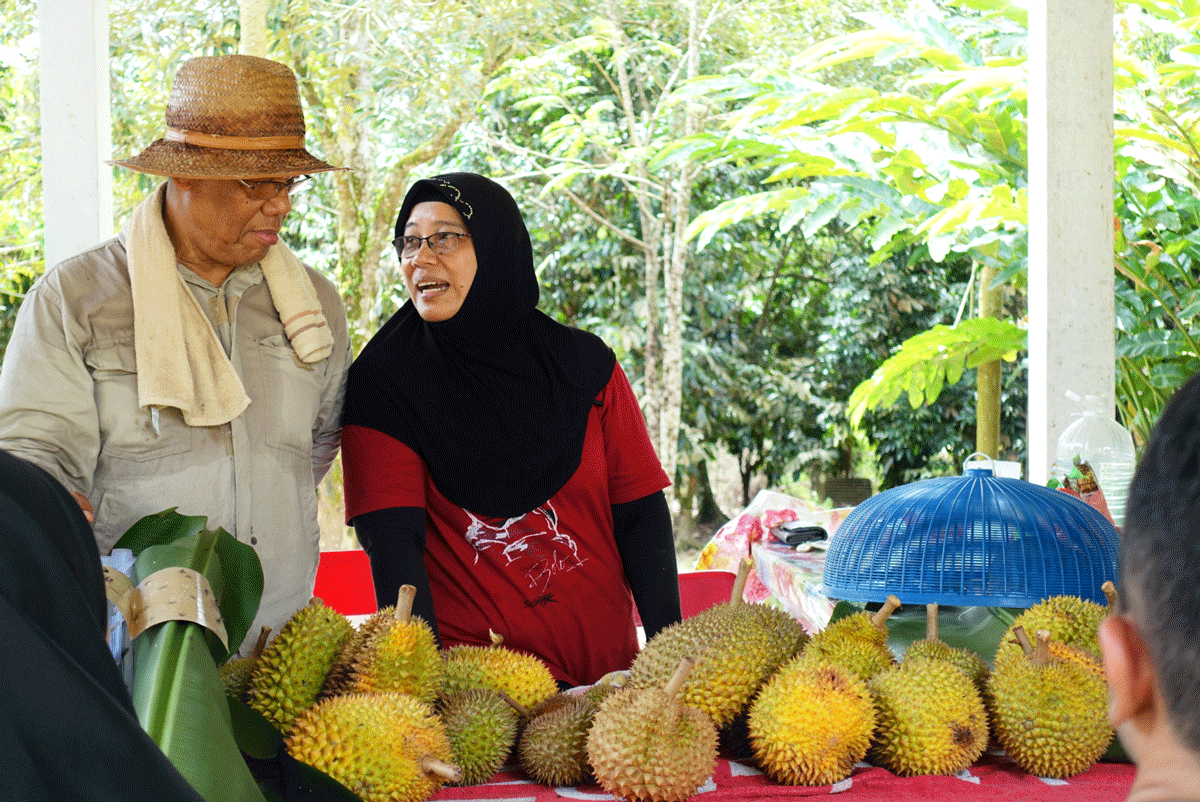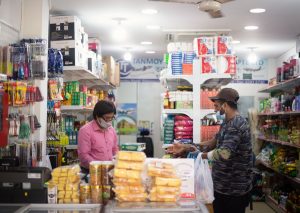It didn’t fall from a great height (I was short then) and it was encased in a plastic bag, but there was still blood—lots of it. I didn’t cry, I merely picked up the durian and continued on my way; there were more important things I needed to be doing, like eating said durian.
Some would say I’m a tough kid, but really, I’m just a durian lover.
The thing about us durian lovers is that we’re all crazy. There’s just something about the thorny, succulent, pungent fruit that inspires a certain obsession in us.
In my case, its led to a permanently scarred toe. Others have gone on to set up durian-themed restaurants and organise durian marathons. Some, like Mohd Jamil Solhan, 67, plant their own durian farm.

Although Uncle Jamil’s family eventually moved to Singapore, his father kept the land and planted rubber trees on it in the hope that when his time came to “balik kampung [go home]”, he could still make a living from tapping rubber.
When the price of rubber refused to rise, Uncle Jamil’s father thought it best to sell off the land; Uncle Jamil disagreed.
“My husband said no, he sayang [love] the land,” says Razimah Abdul Razak, 55, Uncle Jamil’s wife. “It cost about four to five thousand ringgit at that time to transfer the lease to him and we had just gotten married, no money, so I sold off my ring and we had just enough.”
With a 5 acre plot of land in Malaysia now under their possession, what were two full-time Singaporean teachers to do with it?
Start a durian farm, of course.
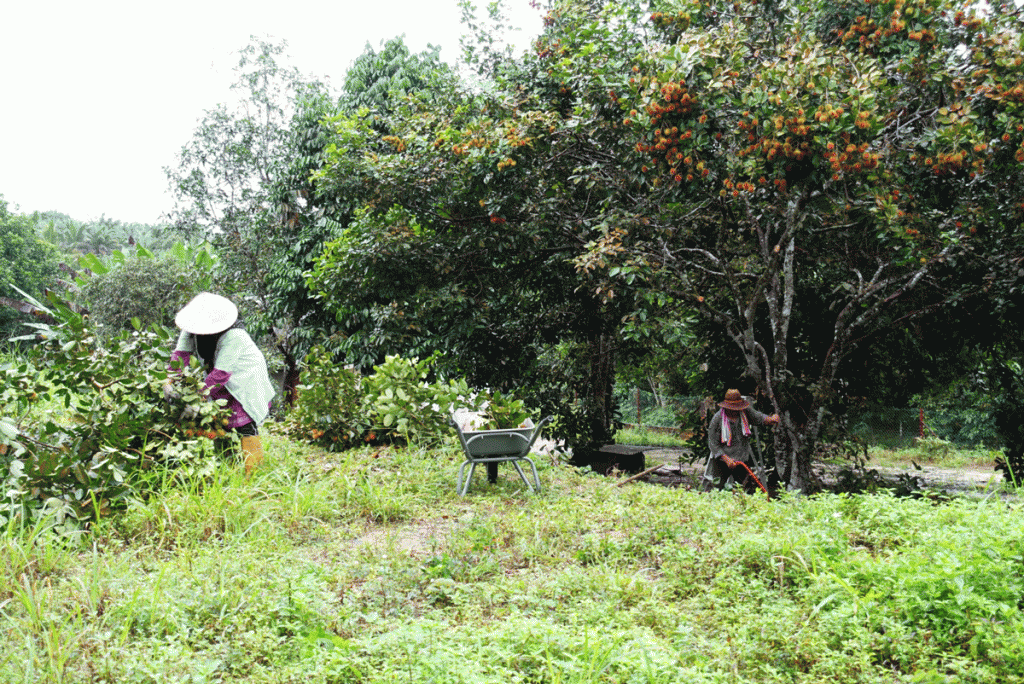
We take a narrow, dirt path up from the ‘main’ road to Uncle Jamil’s house, after which we follow a narrower, rockier path from behind the house up to the durian farm.
Our car stops outside the farm’s ‘warehouse’—a tall tin roofed structure that’s missing its walls, and adjoining it are two smaller, walled off rooms. It’s kampung [village] living at its finest, there’s no wifi, no shower, no fan, no bed and an abundance of flies and mosquitos. It’s a far cry from his jumbo HDB flat back in Woodlands.
“I once read how Abraham Lincoln’s father brought all his children to live along the edge of the forest. Abraham had to walk through the jungle to get to the nearest library where he finished reading all the books. That’s how he became so fluent,” says Uncle Jamil.
“I wanted to adopt that kind of attitude also where I bring my children to the countryside. There’s nothing here. No TV, only a room full of books so they have to read.”
His parenting methods may seem unorthodox, even harsh to some, but given that he’s spent 30 years as a teacher at Bukit Panjang Government High School, I can see why his children’s education would’ve been so important to him.
Uncle Jamil’s children have all grown up now, but he’s kept the farm in more or less the same condition as it was back then—a testament to his unchanging mantra.
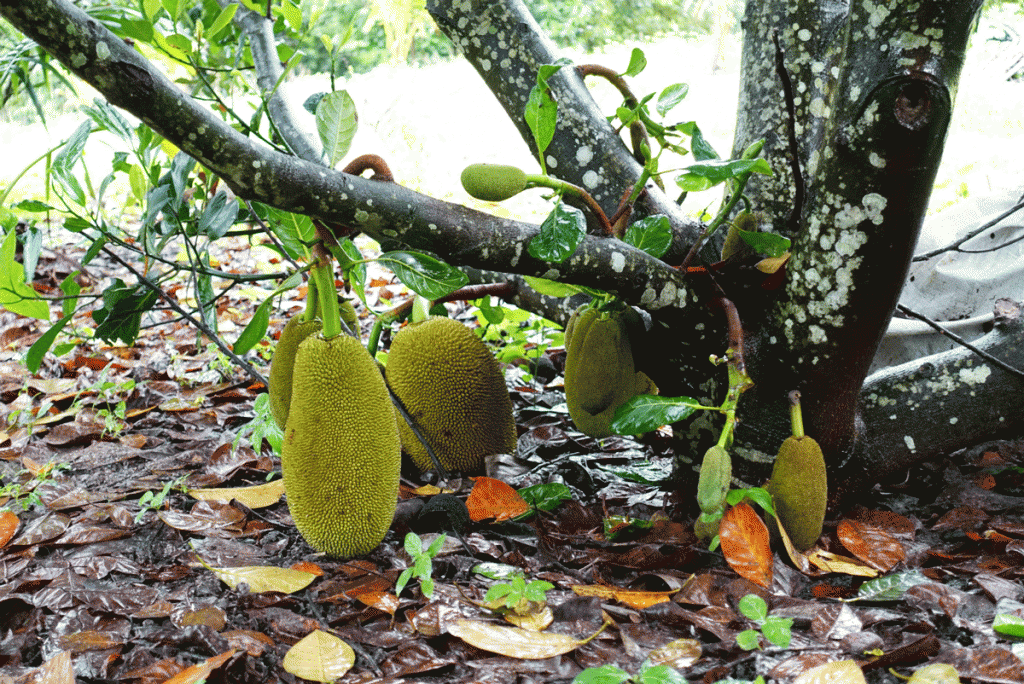
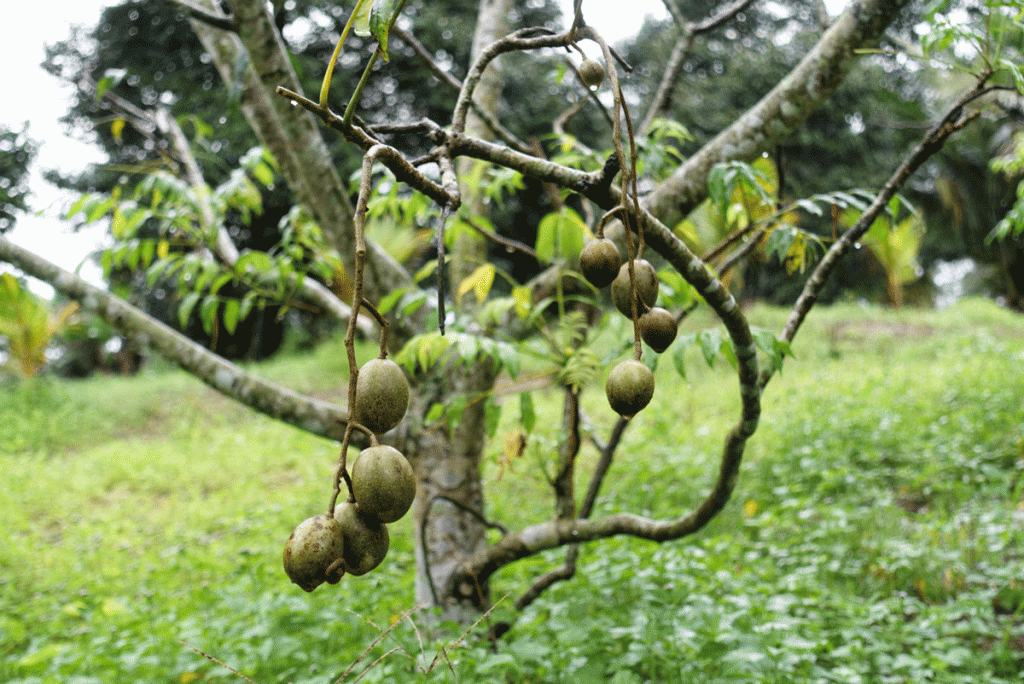
“He loves eating durian,” says Auntie Razimah. “His friend has a plantation in Pontian and every season we would go there to eat durians. One day he said, “I want to change my rubber plantation into durian”, so that’s what he did.”
Using just their bare hands, they would drive up to the farm every weekend after work to clear it of the 1000 odd rubber trees that Uncle Jamil’s father had planted. With each plant they cut down, they would plant another and burn the remnant vegetation.
“I’m not passionate about rubber, I’m passionate about durian,” he tells me. While passion may be an increasingly hard to find trait in people nowadays, this man has it in spades.
Week after week, the toiled in the farm under the sun. Even when Auntie Razimah was pregnant with her third child, they still came back.
“I told him, Pa, you know my friends get married their husband always bring them go Orchard Road watch movie, but you bring me here only watch monkeys,” she jokes.
“But I remember him saying until now, Ma, we are making our future now. As a wife although I don’t see his dream, I believe in him. I trust you, I go along with you.” And that was all they needed to make a dream a reality—even in the face of adversity.
One weekend, they came back to the farm to realise that the entire place had been razed to the ground. “We set fire to the crops we had just cleared last week and left, expecting that it would burn itself out, but the fire didn’t stop, it just spread.”
All that was left of their months of hard work was a pile of ashes.
When Auntie Razimah shares this story with me, her voice cracks ever so slightly and she lowers her eyes to the floor. Although the incident has long passed, the memory is still fresh in her mind.
Despite this setback, they didn’t give up. Uncle Jamil said, “Never mind, let’s plant again.”
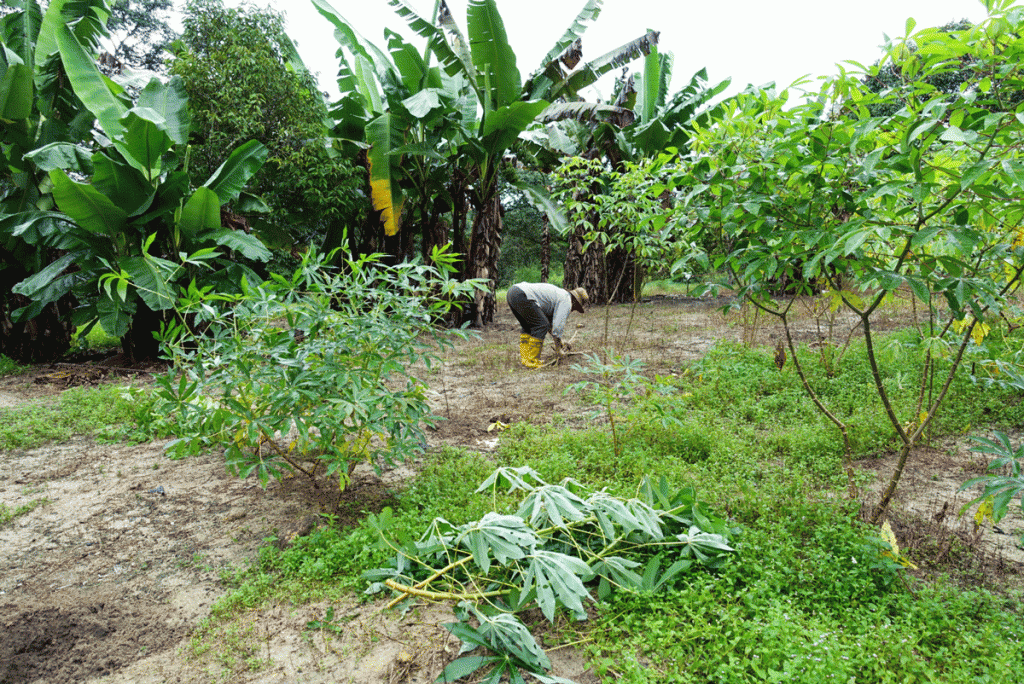
Rather than in neat rows and organised clusters, Uncle Jamil’s fruit trees are everywhere and anywhere—I find soursop trees in the midst of the cempedaks and pineapple trees amongst the Mao Shan Wang durian trees.
“I started off not knowing anything about durians. I just love to eat durians, that’s it. Whatever the vendor would advise me, this is good, I plant.”
He says, “During my time we don’t know Mao Shan Wang, I only know that the locals call it Raja Kunyit. The vendor told me this is good so I said okay, I buy two. I planted it and ten, twenty years later when it bears fruit they tells me this is Mao Shan Wang.”
There have, however, been times when his inexperience set him back substantially.
When his durian trees first became infected by necrosis (the death of cells or tissues), he was helpless to do anything except stand and watch. “In those days, I don’t know. I see my durian trees wilting and dying, who am I going to consult? Last time no Google.”
He learned, eventually. After years of listening to the advice of friends and vendors, consulting books and adapting from past failures, both Uncle Jamil and his wife now talk about durians like experts.
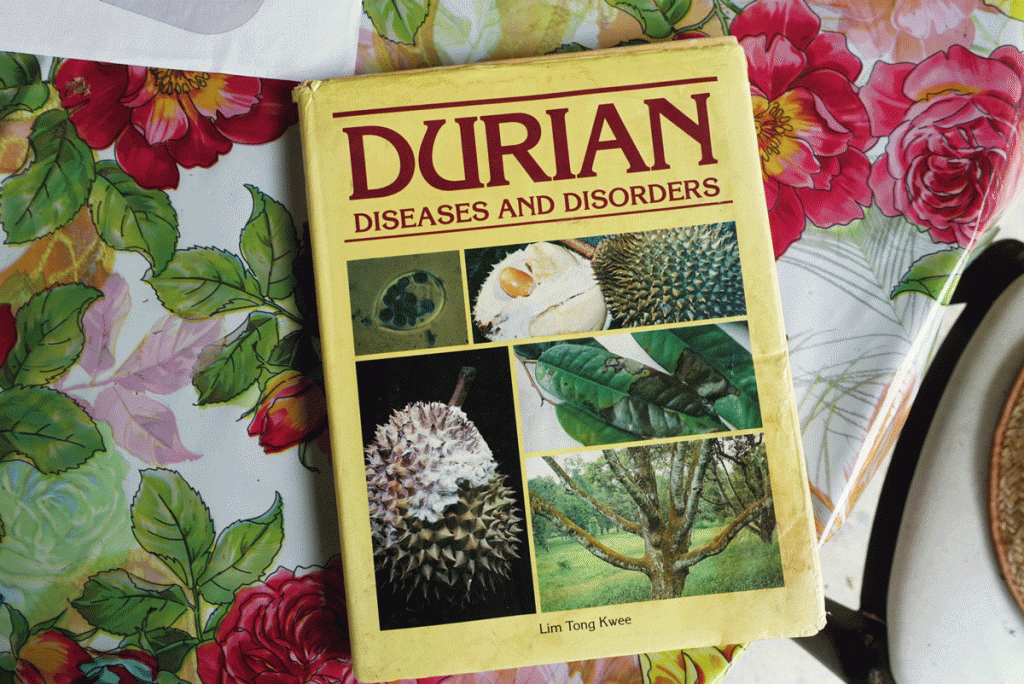

They’ve taken me on a walk/durian picking session around their farm, and Auntie Razimah is pushing a large wheelbarrow accompanied by Uncle Jamil in a large straw hat.
They stop under several trees, bending down to retrieve the occasional durian. Using a small walis tingting [stick broom], Auntie Razimah gives each durian a rough brushing down before placing it into the wheelbarrow.
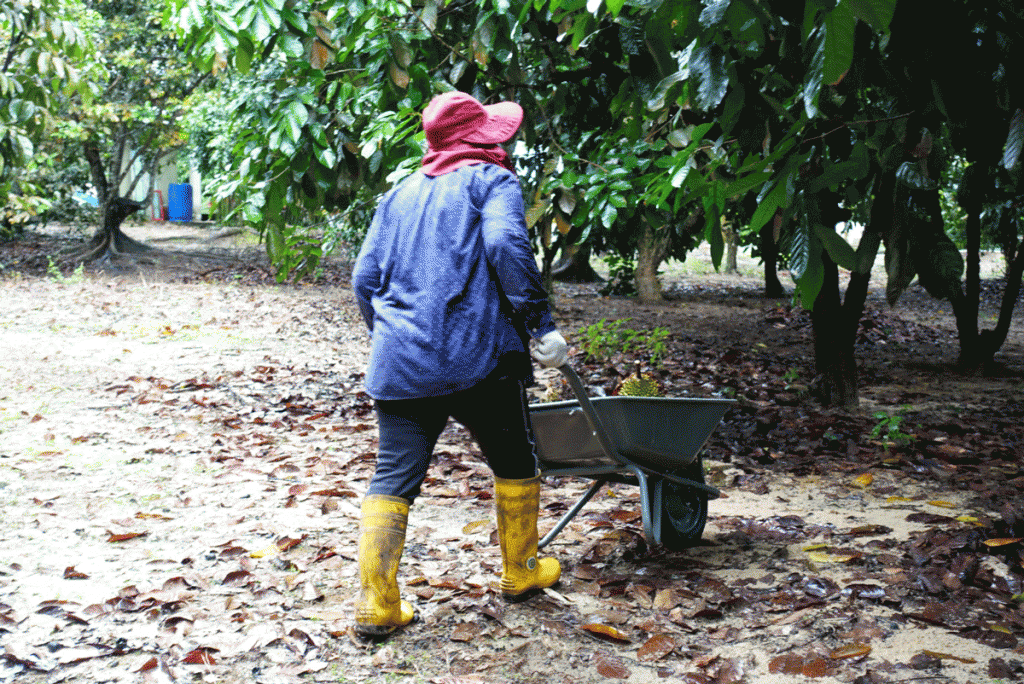
Grafting, they tell me, is when a durian sapling of any species is allowed to grow several inches before its stem is cut off and a branch from another durian species like D24 is inserted. From there, the D24 species will take over and bear fruit, replacing the original species.
Grafted trees are weaker, and can only last around forty to fifty years while trees planted from seeds can live for over a hundred years.
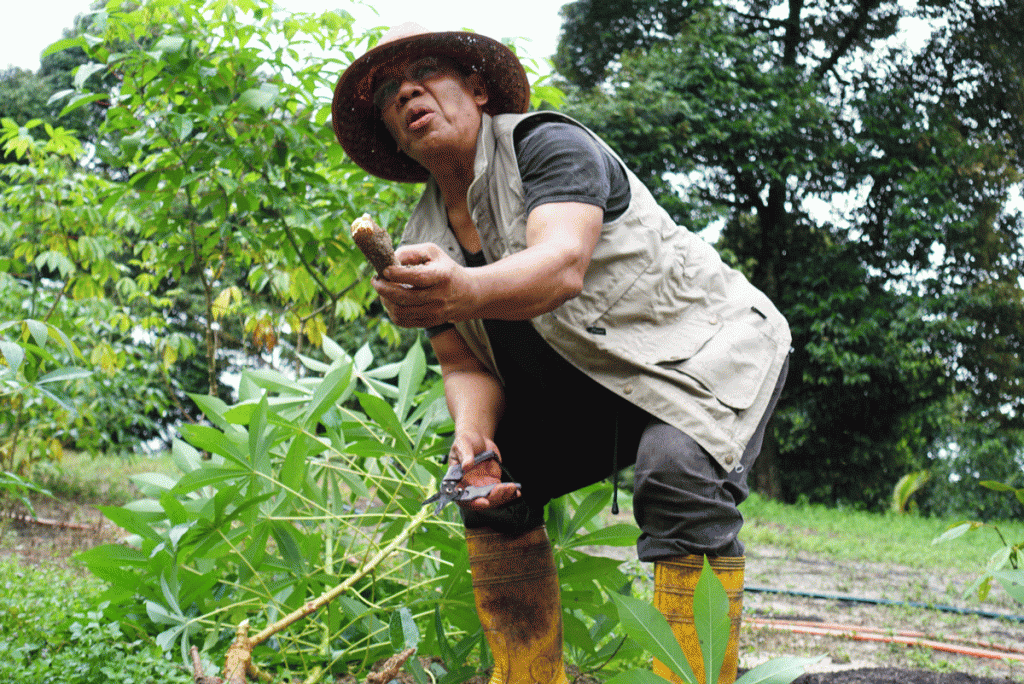
When it comes to picking a good durian, they have several tips.
The first is to purchase Durian Bukit [hill] rather than Durian Paya [swamp], as durians grown on a hill retain less water and so are less soggy.
To tell if a durian is fresh, they advise me to “peel off a bit of the stem”. If the fruit is still fresh (within 3 days of dropping), the bark beneath will still be green and a little moist.
As for smelling a durian, “always smell from the top as the flavour is usually concentrated there.”
“Even if you don’t know what to smell, just pretend,” Auntie Razimah jokes, “Then the seller will know ah, this person knows their stuff.”
And finally, on eating the fruit, I’m told to “choose the fruit at the top, closer to the stem, it is more flavourful.”
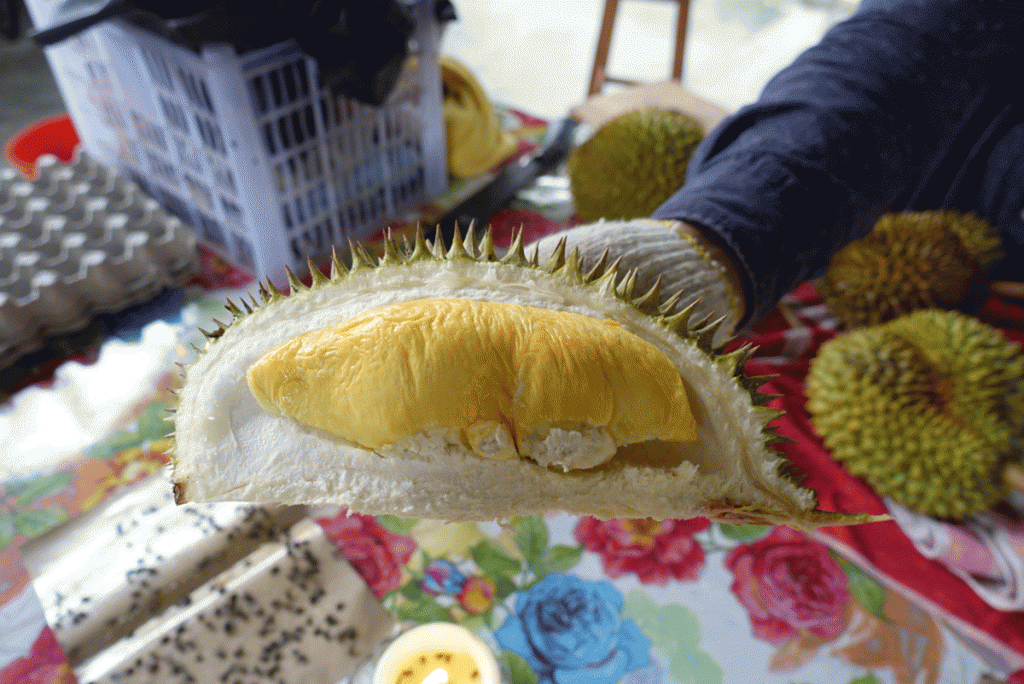
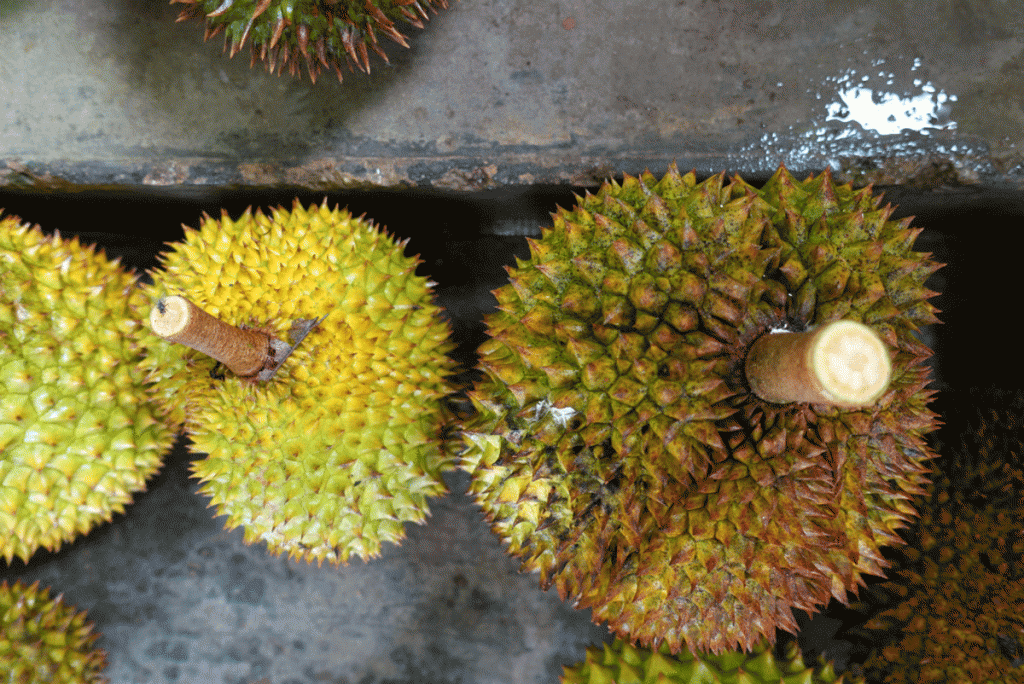
“You need to cool them down with water so that their thorns don’t open up,” she tells me.
“Durians like 101, their shell is thin so they open up fast. They will expand and air will go in and make the taste not nice.” On the other hand, durians like D24 with thicker shells are less likely to open up.
Thicker shells aren’t always good, however. The thicker the shell, the longer it takes for the durian’s natural aroma and flavour to penetrate the shell to reach the fruit.
“Certain fruits, you can open two to three hours after it drops and they all have that fresh, fruity, flowery aroma. But for D24, you need to wait a while more.”
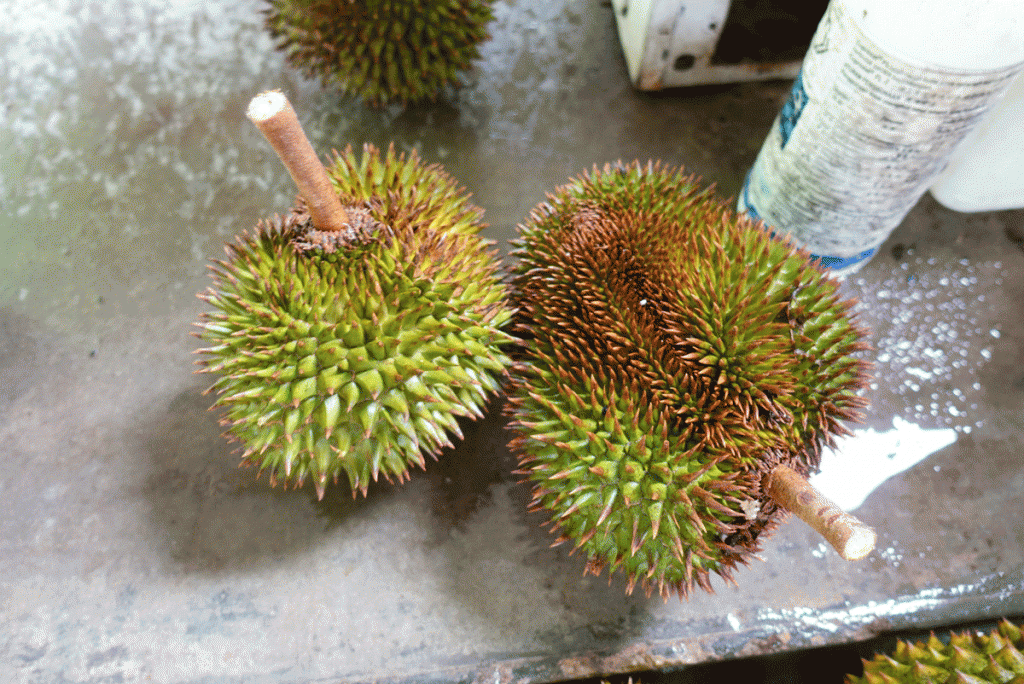
Over the past few years, Uncle Jamil and Auntie Razimah have started hosting tour groups and families—fellow durians lovers looking to get their fill of durian.
This was never their plan however. “We plant the trees last time and just ask our friends come to makan [eat], we never thought of wanting to make money,” says Auntie Razimah.
Up until about 5 years ago, each tree would only yield about 10 durians per season. Once they started maturing however, each tree would drop about three to four hundred durians per season.
To deal with the excess, their daughter Widad suggested they advertise on Facebook. They would do home deliveries at ‘10kg of mixed durians for $60’ and durian appreciation sessions at their farm at $10 per person.
Later that afternoon, I sit in for one of these sessions.
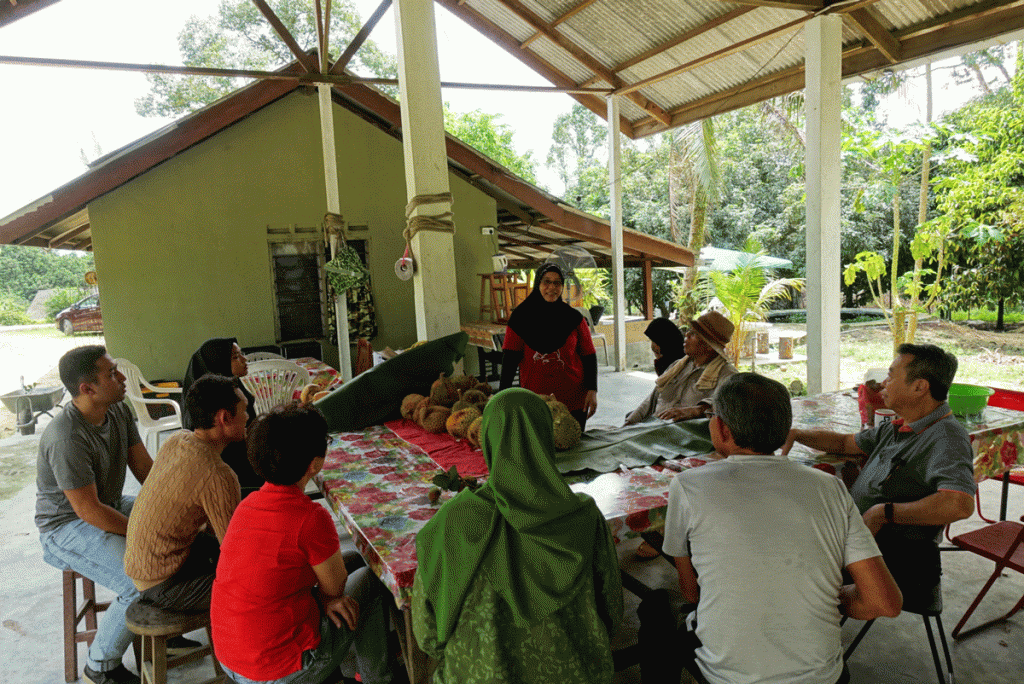
“It’s about the senses. Look at the shape, the colour and then the smell and then the taste,” says Auntie Razimah. “Everyone wants to eat Mao Shan Wang first but I say no. I let them taste from the not so savoury one like Durian Kampung. If you start from Mao Shan Wang you cannot appreciate the rest. When you’re used to living in Singapore, all these durians are there you forget about the rest.”
Durian in one hand and a short stout blade in the other, I watch as Uncle Jamil brings his blade down hard into the base of the durian, prying it open to reveal the fleshy yellow fruit within.
Everyone leans forward, eager to get their hands on a piece of fruit before it’s all gone—or worse, a fly lands on it. All around the table, I hear various noises of approval; the sound of lips smacking together and several people requesting for another piece.
For a moment, there’s bliss.
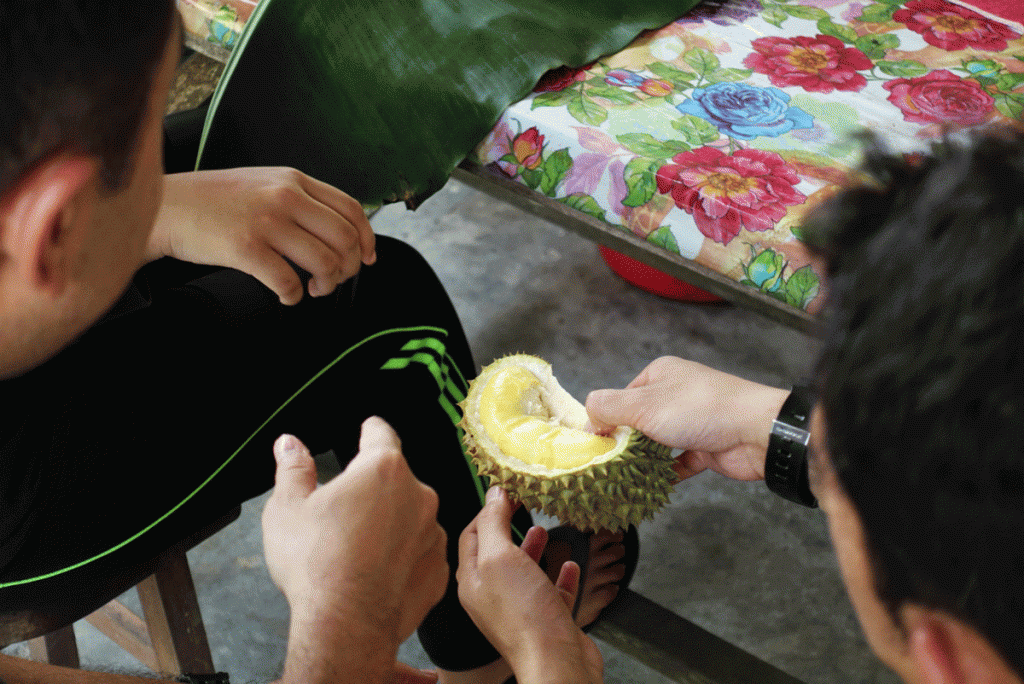

As for Auntie Razimah, she’s busy serving up deep fried tapioca strips seasoned with tumeric alongside her own homemade sambal belachan chilli.
For those craving something a little sweeter, she produces bunches of red rambutans, freshly plucked from this morning.
If this place were on TripAdvisor, they’d easily get 5 stars just for customer service.
“They’re very friendly people, very open, very willing to impart their knowledge which is very important,” says one of the guests. “They are sincere about feeding you and they get pleasure out of watching you enjoy the taste. What’s more, the charge is so low. The husband says we have enough.”
Before today, I had operated under the assumption that Uncle Jamil and Auntie Razimah were just running a durian farm because they could and wanted to. However, it’s clear to me now that they do what they do not just for themselves, for durians, or for money, but in hopes of spreading love—even just a little bit of it—to whoever comes to them.
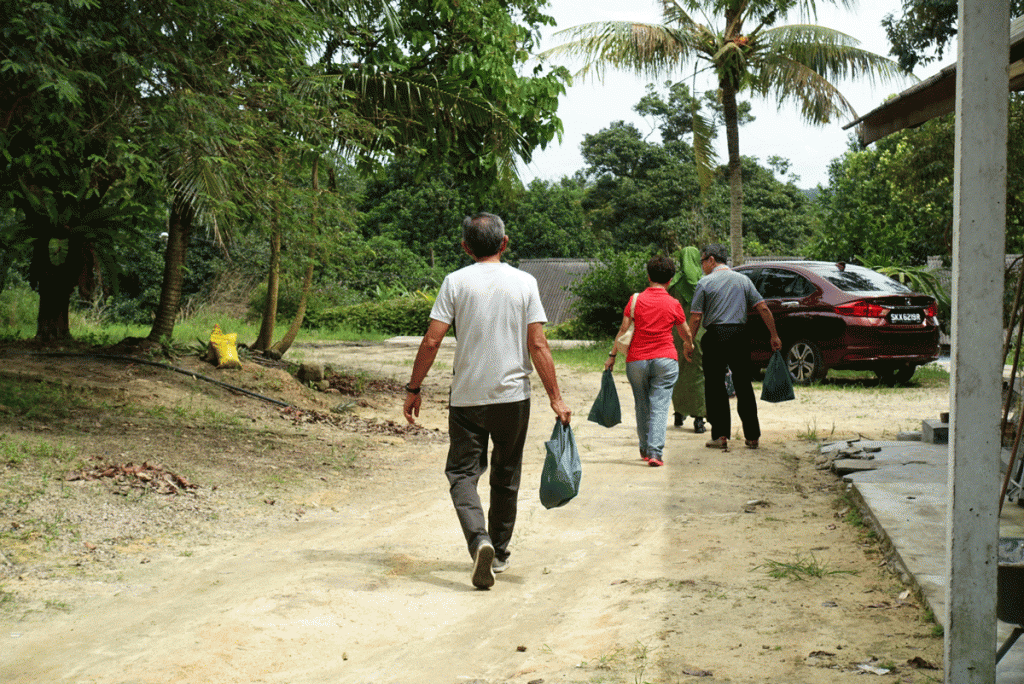
“It was 12:30 in the afternoon and I was still working on the farm,” he tells me.
“He was feeling very dizzy, came back sat down. When he stood up he said he felt very wobbly and started vomiting,” says Auntie Razimah.
When his vomiting didn’t stop, that’s when she decided to take her husband back to Singapore to the hospital to get checked out. He was warded for a week.
As a result of that incident, he lost his hearing in his left ear and now relies on a hearing aid. Despite that, he continues to return to the farm week after week, to work on his fruit trees.
“Success is never permanent, and failure is not a guarantee,” he says. “You will have a time when you are low down but you can come up again.”
Although Uncle Jamil’s farm is flourishing, he has dreams to eventually transform his farm into a proper educational eco lodge. It will remain small scale and simple, with lots of trees that young children can learn about.
“People can stay over, do outdoor activities. I want it to be open to nature, I don’t want to be enclosed in a concrete place. Singapore is already like that,” he says.
He may be 67 but for Uncle Jamil, there is is no age limit on his dreams.
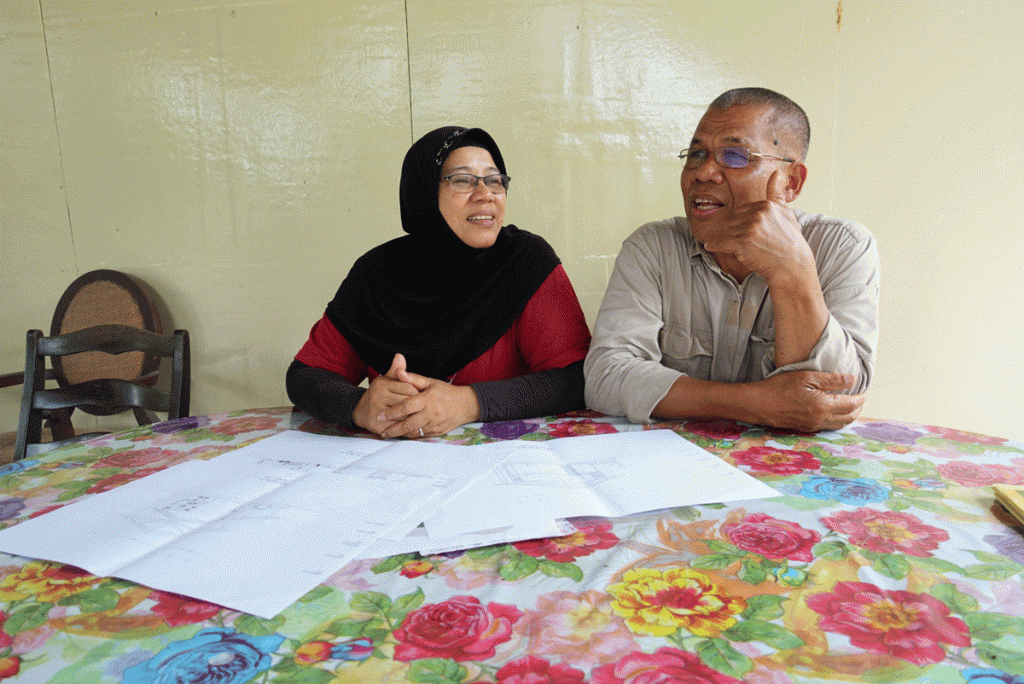
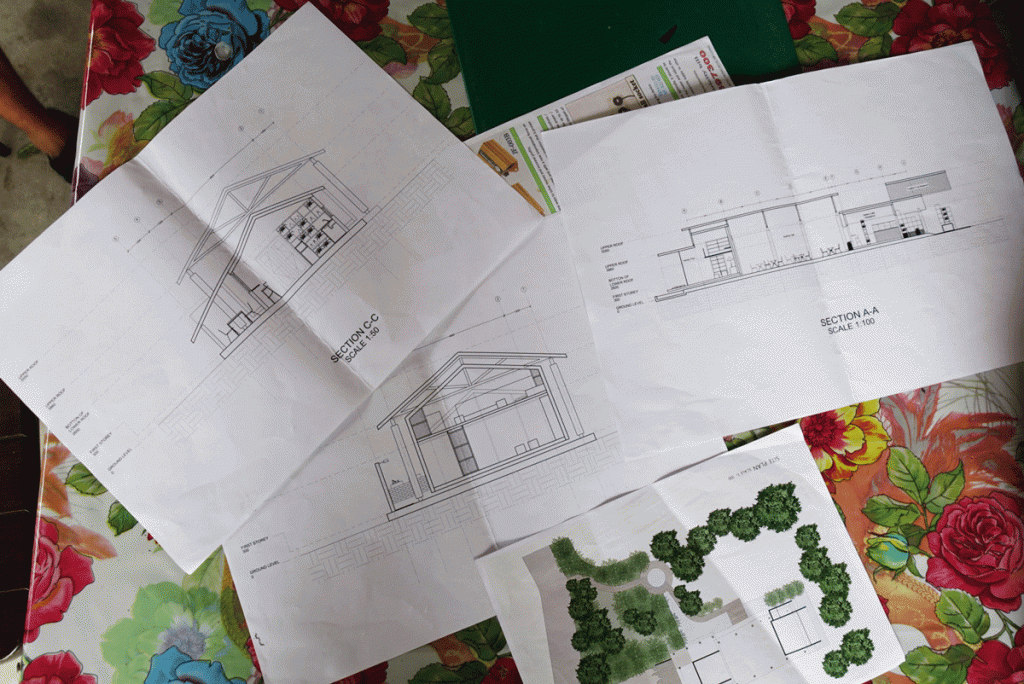
“Everything that I have is temporary. I have only this space and this time. When my time is up, this space is gone and it’s up to me how to use it,” he tells me.
“I don’t want to be rich for what I have, I want to be rich for who I am. What I have, I may have it now but I may not have it tomorrow. It’s what I can leave behind that counts.”

